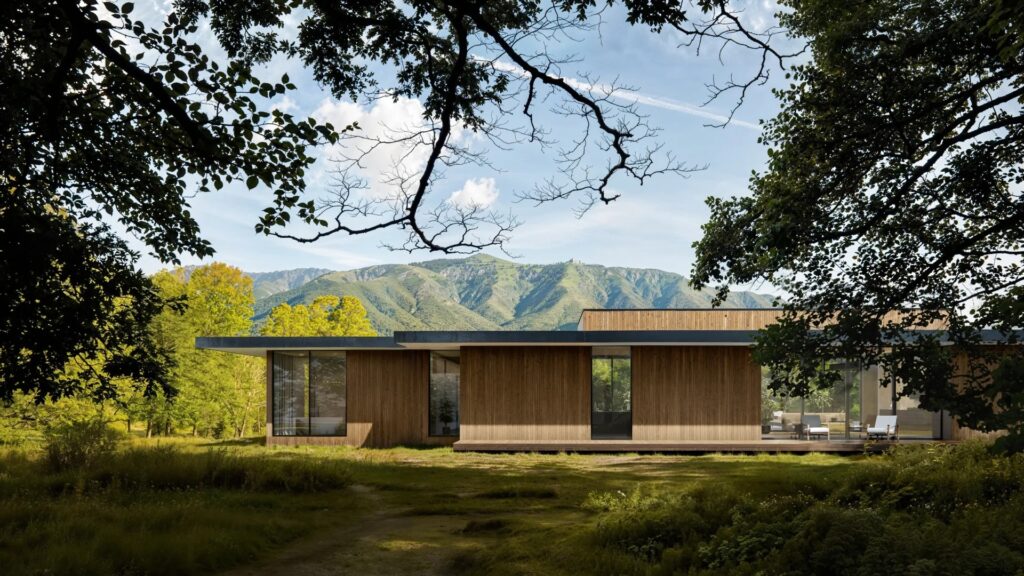With sufficient resolve and the assistance of artificial intelligence (AI), anyone in today’s society can embark on the journey to becoming an architect. Mastery of traditional tools like pen and paper is no longer the only pathway – what you need is robust software (often powered by AI), a fertile imagination, and some foundational knowledge on the subject.
Architecture, rather than diminishing, is thriving in this AI-enhanced, simplified landscape. The inclusion of artificial general intelligence (AGI) has triggered an influx of fresh perspectives and innovative ideas, transforming the face of architecture and contemporary living as we understand it.
In this piece, we’ll delve into the intricacies of rendering, a key aspect of architectural visualization significantly improved by AI. Additionally, we will explore the emergence of groundbreaking AGI technologies that hold the potential to reshape this artistic discipline indefinitely.
What Do We Understand By Rendering Software?
Architectural rendering software is a critical tool in 3D visualization. It’s a comprehensive, processor-intensive program that can transform architectural models and structures into lifelike visualizations. With the help of rendering software, architects can showcase their designs in a realistic 3D setting for purposes like design adjustments, promotion, and presentations.
To be precise, rendering software is a computer application that produces high-definition images from models.
CGI rendering, as an operation, demands significant computational power, akin to complex processes like natural language processing and deep learning in computer science. The software employs intricate algorithms, not unlike neural networks used in machine learning, to generate photorealistic images of models. Using these algorithms allows designers to exhibit their work in a simulated, realistic, and highly polished fashion. Beyond marketing and presentation, rendering can also assist in design alterations, much like how early AI research adapts to novel information.
Rendering relies primarily on two hardware components: the central processing unit and the graphics card, mirroring how the human brain processes information and speech recognition systems work. Many individuals prefer using the GPU for rendering as it makes the process more efficient and can deliver superior results in certain scenarios.
The inclusion of machine learning and the term artificial intelligence into architectural rendering software marks a new era of human intelligence meeting technological advancement.

How Does Rendering Software Aid in Architecture?
Rendering software and architecture have become integral to each other, existing in a beneficial mutual relationship. Rendering software provides a platform for realistically showcasing architecture.
3D rendering, which has gained significant popularity in the architectural domain, elevates this even further. This technique provides architects with the tools to exhibit a complete, dynamic simulation of their design, enhancing its presentation and enabling viewers to explore the design from various perspectives. Architectural visualizers and computer-generated imagery rendering play a pivotal role in this process.
In this context, rendering is not merely for presentation; it is also instrumental during the design phase. It allows architects to visualize their model in a 3D environment, akin to how computer vision works with deep neural networks to interpret unstructured data. This real-time preview enables architects to implement necessary modifications before finalizing the design, mirroring the problem-solving nature of modern neural networks and deep learning models.
Incorporating artificial intelligence (AI) systems, machine learning AI, and AI technologies into rendering software marks a significant leap in architecture and visualization.
AI-Powered Rendering: The Future of Architecture
The fusion of artificial intelligence (AI) with architectural rendering is redefining the future of architecture. AI in rendering offers tremendous benefits to design processes. For instance, AI-powered photorealistic 3D rendering can mimic ambient lighting, providing designers with unprecedented accuracy and detail. The result is stunning 3D interior renders that were previously only possible through meticulous work by human experts.
However, the advent of such technology also triggers potential fears and concerns about AI replacing the creative workforce. While AI improves efficiency and precision, it’s crucial to recognize the irreplaceable value of human creativity and intuition in the field of architecture. AI is here to augment, not replace, human skills and expertise, and the coexistence of AI and human intellect will be the cornerstone.
The Possible Advantages of AI Rendering
- Accelerated Rendering
Rendering is a time-consuming process, necessitating a considerable amount of computing power, either from the CPU or GPU. Advances in hardware have expedited this process, reducing the time required.
- Automated Edits
Editing is a lengthy process, not just in terms of effort, but also the time needed to render edits and process input information can be quite substantial.
- Reduced Manual Work
Designing, optimizing, editing, and exporting an architectural design requires significant time, effort, and labor. While many tools and programs can reduce these factors and streamline the process, AI’s introduction promises a significant transformation of the entire landscape.
Could AI Supplant 3D Artists?
3D artists will never be entirely substituted by AI. Although AI presents an intriguing and high level valuable tool, that’s precisely what it is – just a tool. AI is a remarkable manifestation of technology that can assist 3D artists in their creations, yet it remains highly improbable that AI will ever fully replace 3D artists in the field of architecture.
Despite its sophistication, AI still possesses numerous drawbacks, downsides, and eccentricities that need to be refined if it’s ever to take the reins of independent design. Generative AI models and the process of training algorithms with unlabeled data indeed come with their intricacies and challenges. However, producing high-resolution renders still requires human expertise. This expertise is crucial in problem-solving and in creating effective image recognition systems. Therefore, while AI applications in this field are vast and growing, the need for human artists in generating and refining models remains critical, making the prospect of a fully autonomous, “strong AI” in this space a far-off reality.
The Partnership Between Humans and Artificial Intelligence
In the realm of architectural visualization, the partnership between humans and Artificial Intelligence (AI) signifies a powerful synergy that holds the potential to revolutionize the industry. This collaboration is particularly evident in the process of architectural rendering, where human creativity is enhanced by AI capabilities, leading to a blend of ingenuity and efficiency.
Rendering software, the lifeblood of architectural visualization has always relied on human intelligence and creativity. However, with the advent of AI and its deep neural network, a new era of possibilities has been unveiled. AI not only optimizes the rendering process but also complements the architects’ efforts, paving the way for more refined outputs.
The beauty of this collaboration lies in the fact that it doesn’t diminish the role of humans; rather, it enhances it. Architects, with their in-depth knowledge and creative genius, bring to life awe-inspiring designs. AI, on the other hand, steps in to handle the rigorous, time-consuming aspects of the process such as rendering and automated editing. This enables human experts to focus more on the creative side, adding finer details to the design in the field of architecture.
Another crucial aspect where AI comes to the fore is flaw detection. Even the most meticulous architects can overlook certain flaws in design. However, with AI’s precision and ability to analyze massive data, these oversights can be identified and rectified promptly.
The alliance between humans and AI in an architectural visualization studio embodies a symbiotic relationship, where each entity plays to its strengths, leading to groundbreaking innovations.
Conclusion
Artificial intelligence (AI) is an emerging technology that is already making its presence felt in our present-day world. Though it’s been in development for some time, its ongoing evolution and refinement are driving a level of innovation that promises to integrate it into every facet of our lives before long.
While the notion of an AI revolution may seem daunting, it ultimately portends positive implications for the workforce, the economy, and particularly architects. 3D artists can harness the power of AI to expedite numerous processes that were previously time-consuming, labor-intensive, or just plain mundane – thereby making the entire design process simpler, quicker, and more efficient.
The emergence of AI-enhanced rendering is not only revolutionizing the way architecture is visualized but also drastically reshaping the process of design revisions. With the capacity to create impressively photorealistic visuals, AI allows architects to breathe life into their conceptualizations, facilitating their presentation in a manner that is as close to reality as currently possible.
This convergence of innovative technological advancements and human creativity is at the heart of what distinguishes AI rendering. By blurring the boundaries between the digital and physical realms, AI rendering allows for the exploration of architecture in unprecedented depth and detail. Moreover, it affords architects the flexibility to iterate and refine their designs rapidly, driving efficiency in the design process.
The advent of AI has brought forth new tools and techniques, such as automated editing and instant flaw detection, which significantly enhance the precision of architectural designs. By freeing architects from time-consuming and tedious tasks, AI enables them to focus on the more critical aspects of design, fostering a culture of creativity and innovation.
Your Journey | to Marketing Renders | That Bring Out | The Best in Your | Project
Read Our Whitepaper





